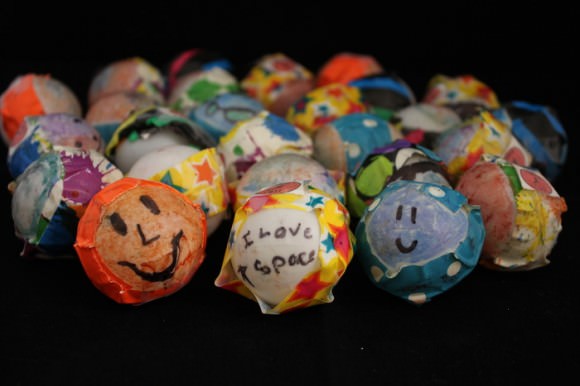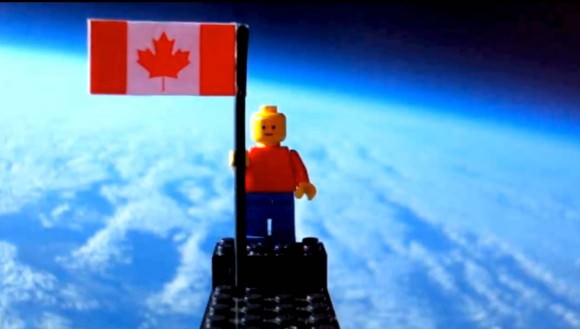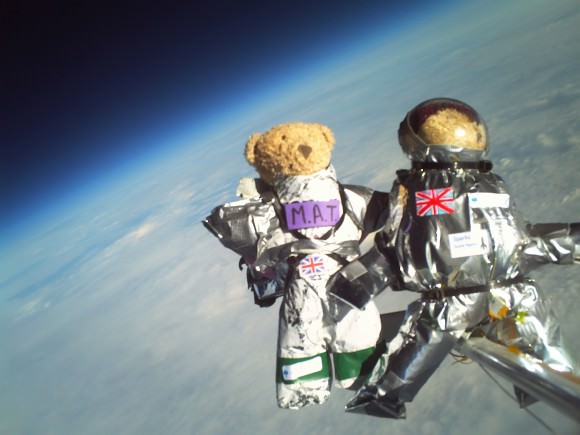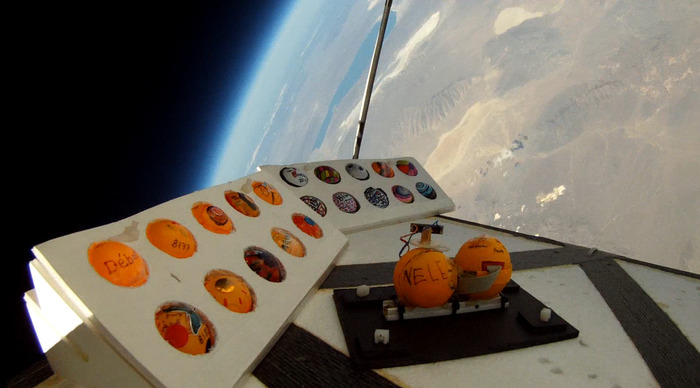Spring is a time of treasures in eggs — think about the Easter weekend that just passed, for example, or the number of chicks hatching in farms across the world. That’s also true of “near-space” exploration. A project called PongSats has sent thousands of tiny experiments into space, and is ready to send up another batch this coming September.
The concept is simple for the students participating — slice open a ball, put something inside you want to test at high experiments, then repackage it and decorate it for the big trip up. The balloons will soar to about 19 miles (30 kilometers), which is well below the Karman Line of 62 miles or 100 kilometers that marks the edge of space. Don’t discount that, however — you will still see black skies and the curvature of the Earth from that altitude.
Anyway, about the PongSats. A Kickstarter campaign (closing in five days) is asking for money to shoot these balls into the atmosphere, for science. While it’s aimed at young students, anybody can get an experiment on that balloon, the founder says.

“My favorite is the marshmallow. You put a marshmallow inside the ping pong ball. At 100,000 feet the marshmallow puffs up completely filling the ball. Then it freeze dries. The student gets to hold in her hand the direct results of traveling [to] the top of the atmosphere,” wrote John Powell, the founder of the project.
PongSat has already been through one successful Kickstarter round, when in 2012 the concept received $12,466 — a 138% increase over its $9,000 goal. That money was slated to send 1,000 student experiments into space. To date, the company has sent over 14,000 experiments aloft with only three losses — a 0.02% failure rate.
“However, the risk for a complete vehicle loss does exist,” Powell acknowledged, but said that after 164 flights, they “have gotten pretty good at it.” Any PongSats lost in flight will be flown again, no questions asked.
Powell’s project is part of a larger trend of sending items high in the sky — sometime for scientific purposes, and sometimes for other reasons. A Lego man and teddy bears are among those that made the journey.

This 2012 project was called “Lego Man In Space” (although of course, balloons fly high in the atmosphere and well below the Karman Line at 62 miles or 100 kilometers above the surface.) Two teenagers from Toronto, Canada — Mathew Ho and Asad Muhammad — launched the weather balloon from a local field and captured some stunning video and pictures along the way.
“Upon launch we were very relieved. But we had a lot of anxiety on launch day because there were high winds when we were going up after all the hard work,” said Ho in a studio interview at the time on Canadian news channel CTV.
“We were also scared because now we would have to retrieve it back after it came down,” Asad said.
“We had no idea it would capture photos like that and would be so good,” said Ho. “We were blown away when we saw them back home.”

It’s a teddy bear party in the sky! A group of English 11-13-year-olds designed the spacesuits on these stuffed animals, which were sent aloft to 30,085 meters (101,066 feet) in 2008. While at first glance the purpose looks esoteric, the goal was to test which spacesuit materials best insulated against the -53 degrees Celsius (-63 Fahrenheit) temperatures the teddies endured.
Student-run Cambridge University Spaceflight helmed the project along with a science club and community college.
“We want to offer young people the opportunity to get involved in the space industry whilst still at school and show that real-life science is something that is open to everybody,” stated Iain Waugh, then chief aeronautical engineer of CU Spaceflight.
“High altitude balloon flights are a fantastic way of encouraging interest in science. They are easy to understand, and produce amazing results,” added Daniel Strange, treasurer of CU Spaceflight.
Sometimes the aim is more artistic, such as this German project that created a beautiful video showing the views from more than 100,000 feet (30,480 meters). You can see in the video above the careful preparations that go into launch, plus some of the side benefits — such as getting to make funny voices using helium! But it was the engineering challenges that attracted these students, they wrote Universe Today in 2011.
“Our challenge was to survive ambient air pressures as low as 1/100th of an atmosphere, temperatures as low as -60°C and finally to locate and recover the camera,” Tobias Lohf wrote . “We had a HD-Cam, GPS tracker and a heating pad on board, and all the construction had a total weight of about 1kg.”
The students emphasized that it doesn’t take a big budget or a lot of engineering to get that high. “All you need need is a camera, weather balloon and duct tape,” they said.

